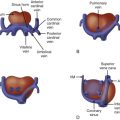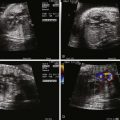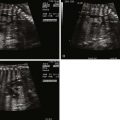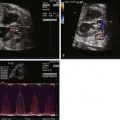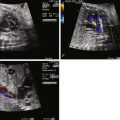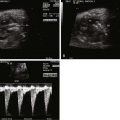Practice care models for the fetus with cardiovascular disease are varied, evolving, and continuously improving. Diagnostic capacities are increasing through the use of targeted ultrasound and fetal echocardiography. Fetal cardiovascular health is the focus of multiple disciplines including primary maternal caretakers (obstetricians, perinatologists, maternal-fetal medicine specialists), primary infant caretakers (pediatric cardiologists, neonatologists), and medical imagers (sonographers, radiologists). Whether through the auspices of pediatric cardiology or perinatology/maternal-fetal medicine, the goals are the same and include:
- 1
Accurate diagnosis.
- 2
Compassionate and knowledge-based counseling and family education.
- 3
Facilitation of a safe transition from fetus to newborn with creation of a delivery plan that is maternally safe and optimizes outcome for the newborn.
Practitioners will approach these goals in a variety of fashions. Importantly, it should be stated that there is no one correct way to approach caring for these patients. In this chapter, we discuss some of the operational systems and strategies we have developed to care for fetal cardiovascular disease—for the fetus, mother, and family—as well as methods of transition to postnatal care, all within the framework of an academic pediatric cardiology center.
The Fetal Heart Program Practice Care Model
In 2001, we realized the importance of establishing a separate, dedicated section within our clinical group to focus attention on fetal heart disease and, therefore, started our “Fetal Heart Program.” Fetal echocardiography can be performed within a general pediatric echocardiography laboratory; however, the time commitment necessary for imaging performance and counseling, and the logistics necessary to provide truly comprehensive optimal care, suggested to us the need to create a separate “clinical unit” focused on fetal heart matters. Creation of a focused fetal heart section allows for program specific endeavors such as creation of a separate adult-focused outpatient waiting area, the purchase of ideal fetus-specific imaging equipment, and identification of staff and personnel specifically trained to deal with the pregnant patient.
Since inception, our “Fetal Heart Program” has grown in size and currently consists of a unit/section physician director and a core staff of attending physicians experienced and trained in fetal cardiovascular imaging and prenatal management. Dedicated nurse coordinators help facilitate care and are individually assigned to patients, which aids tremendously with continuity of care. The nurse plays a key role in the initial counseling sessions and continues the educational process throughout gestation, shepherding families through to the point of delivery. A social worker is assigned to join in counseling sessions and to assist families with whatever logistical support is necessary. The social worker performs a psychological assessment for each patient and provides support and counseling during what is an extremely stressful time. Charts for record keeping are created for each patient, which includes a general maternal and family history “intake questionnaire” ( Box 5-1 ), referring physician records (obstetrical or pediatric cardiology), as well as fetal echo reports, testing data results (blood or amniocentesis), and letters summarizing visits. Notations from nursing and social worker evaluations are generated throughout the pregnancy encounter and are also included. These charts establish a running record of information concerning prenatal care, which accompanies the fetus to postnatal management in the intensive care unit.
- •
Maternal demographic information
- •
Partner demographic information
- •
Referring physician information
- •
Maternal allergies
- •
Chronic medical problems
- •
Prescription medications
- •
Over-the-counter medications
- •
Natural remedies
- •
Family history for medical or genetic problems
- •
Obstetrical health history
- •
Previous pregnancy history
- •
Present pregnancy: Spontaneous conception? Assisted reproductive technology? If so, what type?
- •
Psychosocial history
- •
Exposure history (e.g., tobacco, alcohol, radiation, toxic substances, febrile/viral illness)
Measuring the Impact of a Prenatal Heart Defect: The Fetal Cardiovascular Disease Severity Grading Scale
An essential part of counseling for congenital heart disease before birth involves the designation and conveyance of the severity of the anomaly. Counseling typically involves detailed explanations of what is found, what interventions or surgeries might be necessary, and what the overall prognosis and quality of life will be for the fetus, infant, child, and beyond. Scales for complexity of congenital heart disease have been developed for the cardiothoracic surgeon and primarily relate to complexity of the surgery and operative outcome. A prenatal severity scale would be of value in a number of ways. It would create uniformity in gauging severity of caseload across centers, aid in counseling, and may be a useful tool for research studies. Such a “fetal cardiovascular severity scale” needs to incorporate surgical complexity as it relates to survival, but also many other factors that can influence severity of a disorder such as (1) likelihood of fetal demise, (2) potential hemodynamic instability after birth but before intervention, (3) number of total lifetime anticipated interventions/surgeries, and (4) functional status and quality of life after intervention/surgery.
In order to attempt to establish a standardized consensus, we are developing a tool we call the “Fetal Cardiovascular Severity Grading Scale.” This is a seven-point scale ranging from grade = 1, very mild disorders with excellent outcome, to grade = 7, the most severe form of disease in which perinatal survival is of question. The system is being validated through consensus opinion of pediatric cardiologists across the United States, and continues to evolve through modification. Table 5-1 lists the grading system in its current iteration (2011) and the criteria for each grade. Table 5-2 lists examples of common diagnoses of congenital heart defects and their proposed severity grades, using the current grading system. It is important to note that these grades are based purely on isolated forms of heart disease and do not take into consideration the presence of other variables such as prematurity, additional extracardiac malformations, genetic abnormalities, and chromosomal abnormalities or syndromes, all of which certainly add to the severity of the cardiovascular condition.
| STATUS | DEFINITION | TREATMENT | PROGNOSIS/ANTICIPATED OUTCOME | BRIEF SUMMARY DESCRIPTION | 2 V | 1 V |
|---|---|---|---|---|---|---|
| Level 1 | Cardiovascular finding with minimal, if any, negative impact on well-being. | None | Excellent/normal quality of life. | No significant disease | ✓ | ✗ |
| Level 2 | Cardiovascular abnormality where treatment may be necessary. Postnatal follow up is necessary. | Medical management may be required in utero or after birth. Surgery or catheter therapy is possible but will need to await postnatal assessment to be certain. | Excellent/normal quality of life. | Mild disease, need for intervention (surg/cath) possible. | ✓ | ✗ |
| Level 3 | Cardiovascular abnormality/ simple form of congenital heart disease (two-ventricle). | Surgery or catheter therapy will, with certainty, be required. | Excellent/normal quality of life. | One intervention (surg/cath) necessary with excellent outcome. | ✓ | ✗ |
| Level 4 | Cardiovascular abnormality/ complex form of congenital heart disease (two-ventricle). | Surgery will, with certainty, be required. Further additional interventions or surgery may be necessary at some point in life. | Good/close to normal quality of life. | One intervention necessary, multiple interventions (surg/cath) are possible over lifetime; good outcome. | ✓ | ✗ |
| Level 5 | Cardiovascular abnormality/ complex form of congenital heart disease, single-ventricle or two-ventricle type. | Fontan surgical palliation strategy required for single-ventricle patients; or surgery for two-ventricle repair will, with certainty, be required and further intervention or surgery will, with certainty, be necessary in the future. | Prognosis is fair-to-good; infant is likely to survive surgery. Quality of life may be impaired or duration of life may be limited. | Single-ventricle strategy, low risk; two-ventricle strategy, with definite need for additional procedures over lifetime; fair-to-good overall outcome. | ✓ | ✓ |
| Level 6 | Cardiovascular abnormality/ complex form of congenital heart disease, single-ventricle or two-ventricle type. | Fontan surgical palliation strategy required, but is at high risk; or two-ventricle repair but at high risk. | Prognosis is poor-to-fair. Risk of death is possible; long-term complications are highly likely. Survival beyond childhood is poor. | Single-ventricle strategy, high risk; two-ventricle strategy with variable outcome and limited life expectancy. | ✓ | ✓ |
| Level 7 | Cardiovascular abnormality/ complex form of congenital heart disease with very poor prognosis. | Intervention may be offered, but expected outcome is poor. | Fetal or perinatal demise likely, despite intervention. | Poor outcome. Survival beyond early period of life not expected. | ✓ | ✓ |
Stay updated, free articles. Join our Telegram channel

Full access? Get Clinical Tree



